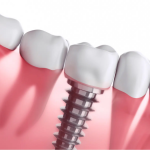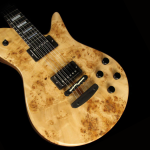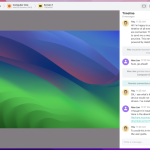Finding the right oxygen concentrator can feel overwhelming, especially with so many options on the market. Whether you need one for medical purposes or to support your active lifestyle, understanding what to look for is crucial. The right choice can improve your quality of life and ensure you’re getting the oxygen therapy that fits your specific needs.
I’ve learned that factors like flow rate, portability, and noise levels play a significant role in making the best decision. Trusted resources like the American Lung Association offer valuable insights into oxygen therapy and equipment. Knowing where to start and what questions to ask can make all the difference in finding a concentrator that works for you.
Let’s break down the essentials so you can confidently choose an oxygen concentrator that aligns with your lifestyle and medical requirements.
Understanding Oxygen Concentrators
Oxygen concentrators are medical devices that deliver oxygen therapy to individuals with respiratory conditions. They filter and concentrate oxygen from ambient air to ensure a steady oxygen supply for users.
What Are Oxygen Concentrators?
Oxygen concentrators are advanced, user-friendly machines designed to assist those suffering from conditions like COPD or emphysema. Unlike oxygen tanks, they generate oxygen rather than storing it, offering a sustainable and cost-effective solution. Concentrators are often categorized by flow type—continuous flow or pulse dose
Some models, like the Inogen One G5, provide portability while delivering efficient oxygen therapy. These compact devices are suitable for active lifestyles, making them popular choices for travelers. By tailoring oxygen delivery to specific needs, concentrators become essential tools for maintaining health and independence.
How Do Oxygen Concentrators Work?
Oxygen concentrators extract oxygen from surrounding air using advanced filtration and compression technology. They separate nitrogen and other gases, ensuring the output contains up to 95% pure oxygen.
Devices like the Inogen One G5 use pressure swing adsorption (PSA) to deliver oxygen efficiently. This method processes air through zeolite filters, capturing nitrogen molecules and isolating oxygen. Advanced models can adjust oxygen delivery based on breath patterns, increasing therapy effectiveness. Despite varying in size and capacity, all concentrators maintain a consistent oxygen supply critical for health management.
Factors to Consider When Choosing an Oxygen Concentrator
Selecting the right oxygen concentrator involves evaluating specifications and functionality based on personal needs. Different factors influence performance, convenience, and suitability for varying lifestyles.
Oxygen Flow Rate
The required oxygen flow rate depends on medical prescriptions. Concentrators typically provide continuous flow or pulse dose modes. Continuous flow models deliver a steady oxygen supply, suitable for patients needing constant oxygen. Pulse dose models, like the Inogen One G5, release oxygen during inhalation, conserving energy and enhancing portability. I always recommend checking the maximum flow rate, which ranges between 1 to 10 liters per minute in most devices. Matching the device’s output to your prescribed requirements ensures proper oxygen therapy without interruptions.
Portability and Weight
Portability plays a significant role for users with active lifestyles. Lightweight and compact devices like the Inogen One G5 allow easy mobility for outdoor use or travel. Units designed for portability weigh between 3 to 10 pounds, offering convenience without sacrificing functionality. I consider the concentrator’s design for carrying, such as features like shoulder straps, wheels, or backpacks, essential for comfortable movement. Transportable models cater to needs outside the home, while heavier stationary models suit indoor use.
Noise Level
Noise levels affect comfort during continuous use. Most oxygen concentrators operate between 30 to 50 decibels, equivalent to a quiet conversation or office environment. Quieter models enhance sleep quality and reduce disruptions in social settings. I check manufacturer specifications to confirm noise ratings before choosing a device. For discretion in shared spaces, lower decibel machines like the Inogen One G5 offer quiet operation, beneficial for long treatment durations.
Power Source and Battery Life
Power options ensure usability across different locations. Models like the Inogen One G5 include both AC power adapters and rechargeable batteries, supporting flexibility during home or travel usage. I analyze battery duration under different flow settings; for instance, portable units offer 4 to 10 hours of operation on a single charge. Devices with extended battery life or swappable batteries enhance independence during outdoor activities or emergencies. Adapting to varying power sources ensures consistent oxygen delivery.
Maintenance and Durability
Routine maintenance and robust construction are crucial for long-term performance. Many concentrators require regular cleaning of air filters, cannulas, and tubing, with guidelines often provided in the manual. Durable units withstand frequent use and offer longer warranties, reflecting trusted quality. I consider models known for reliability under intense operation, like the Inogen One G5, designed for daily and travel use. Ensuring accessibility to replacement parts and professional servicing supports seamless operation over time.
Types of Oxygen Concentrators
Oxygen concentrators come in two main types, continuous flow and pulse dose, each serving different medical and lifestyle needs. Choosing between these depends on factors like oxygen requirements and activity levels.
Continuous Flow Oxygen Concentrators
Continuous flow oxygen concentrators deliver a constant stream of oxygen, measured in liters per minute (LPM), regardless of the user’s breathing pattern. They’re ideal for individuals who need steady oxygen support, such as during sleep or rest, making them a common choice for stationary use.
These devices often feature higher oxygen output, supporting flow rates from 1 to 10 LPM, which suits those with more severe respiratory conditions. Models supporting continuous flow, such as the Inogen One G5 continuous flow unit, are rare in portable designs but effective for stationary setups. While reliable, continuous flow units are typically larger and heavier than pulse dose concentrators, limiting portability for active users.
Pulse Dose Oxygen Concentrators
Pulse dose oxygen concentrators deliver oxygen in short bursts, synchronized with the user’s inhalation. This method conserves oxygen and extends battery life, making it perfect for active users or those who travel frequently. Unlike continuous flow models, pulse dose concentrators adjust output based on breathing rate.
Portable units like the Inogen One G5 are designed for efficiency, offering a lightweight form factor without sacrificing functionality. These devices suit individuals with lower oxygen needs during movement or daily activities. While pulse dose concentrators excel in portability, they’re not ideal for those who require a constant oxygen supply, such as during sleep or low-breathing states.
Tips for Selecting the Right Model
Choosing the right oxygen concentrator involves understanding medical requirements, lifestyle compatibility, and financial considerations. Using these tips can help narrow down your options effectively.
Consulting with a Healthcare Provider
Consulting with a healthcare provider ensures that the chosen oxygen concentrator aligns with medical prescriptions. They can recommend suitable models, like the Inogen One G5, which supports portable oxygen therapy. Providers can also specify whether continuous flow or pulse dose is appropriate based on oxygen needs. Regular communication with medical professionals helps adapt concentrator options if health conditions change over time.
Evaluating Your Lifestyle Needs
Lifestyle evaluation is essential to match the concentrator’s features with daily activities. Active users benefit from lightweight devices such as the Inogen One G5 for portable usage, while homebound individuals may prefer continuous flow models for consistent oxygen delivery. Noise levels impact comfort, especially during social activities or rest, so selecting models with lower decibel ratings might enhance usability in various settings.
Budget and Insurance Coverage
Understanding budget and insurance coverage helps balance cost and accessibility. Check if insurance plans cover specific models like the Inogen One G5 or similar devices. Factor in long-term costs, including maintenance, battery replacements, and accessory purchases, to ensure affordability. Some providers offer payment plans or coverage advice, making it easier to select a reliable concentrator without exceeding financial limits.
Popular Oxygen Concentrator Models and Brands
Selecting a reliable oxygen concentrator involves reviewing popular models and trusted brands. I’ve detailed key features and comparisons to ease your decision-making process.
Features Comparison
Top models like the Inogen One G5, Philips Respironics SimplyGo, and AirSep Freestyle 3 offer diverse options for continuous flow or pulse dose settings. The Inogen One G5 combines portability and advanced pulse dose technology, accommodating active users. Philips Respironics SimplyGo, providing both continuous flow and pulse dose modes, suits varied therapeutic needs. AirSep Freestyle 3 focuses on lightweight design, ideal for travelers, though it’s pulse dose only.
Models differ in battery life, noise output, and weight. For instance, the Inogen One G5 operates up to 13 hours with an extended battery, outperforming many devices. In contrast, Philips Respironics balances versatility with slightly heavier construction at 10 lbs. Matching features to specific medical and lifestyle priorities is essential.
Pros and Cons of Top Brands
Inogen, known for portability, excels with models like the Inogen One G5, offering long battery life and refined pulse dose technology. However, its focus on pulse dose may limit use for those needing continuous flow. Philips Respironics combines flexibility with reliability, supporting both continuous and pulse options, though its devices are bulkier compared to brands like Inogen.
AirSep prides itself on ultra-light designs, catering to users prioritizing mobility, but lacks continuous flow capabilities. Each brand has unique strengths and constraints, empowering users to tailor their choice based on specific medical prescriptions and daily routines.
Lynn Martelli is an editor at Readability. She received her MFA in Creative Writing from Antioch University and has worked as an editor for over 10 years. Lynn has edited a wide variety of books, including fiction, non-fiction, memoirs, and more. In her free time, Lynn enjoys reading, writing, and spending time with her family and friends.















